Exploring Lillooet: Fraser Cove RV Park, Fort Berens Winery, and much more
As I mentioned in my last post, within a couple of hours of arriving at the Fraser Cove RV Park in Lillooet, I had booked a third night. I had lots to see and do in Lillooet and the area. The photos and commentary in this post are from Days 46, 47, and 48 of the trip (June 10-12). I did some exploring beyond Lillooet on those days, but those activities will have their own posts.
The Fraser Cove RV Park is tucked away right on the Fraser River, in a remote corner off a dead-end road, close to a wooden bridge that was built in 1913. The business was bought a year and a half ago by Peter and Dawn Mortensen, and their story, which I heard pieces of from each of them, is part of what drew me to stay another day.
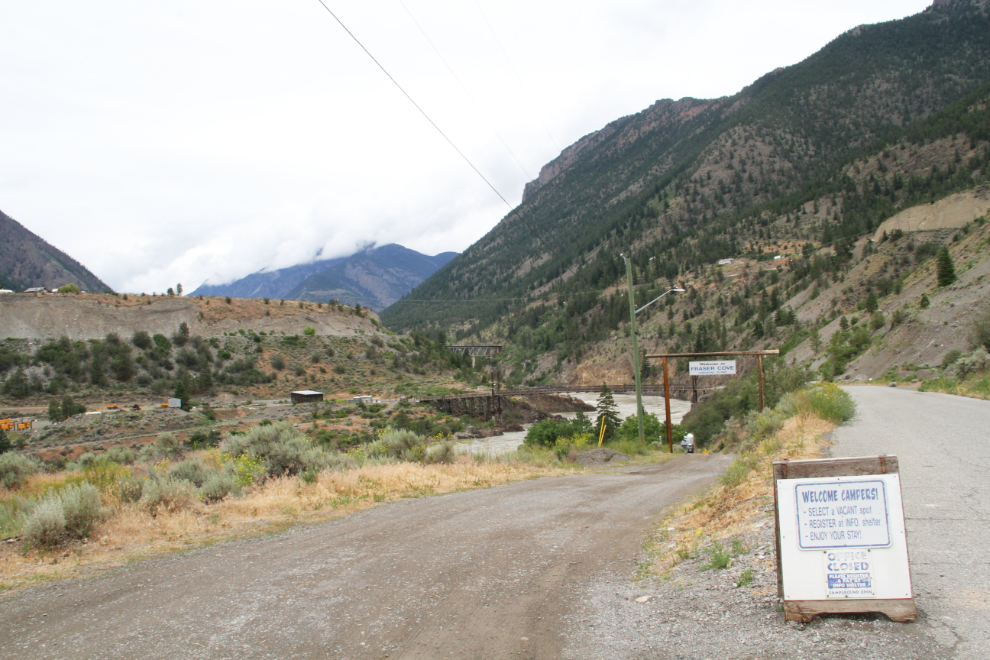
The camp site that Peter assigned me was far from any other sites, on an upper level. All the other RV sites are on the lower level seen to the left in this photo. There is also a guest cabin on that level.

In the trees below the RV level, pretty much right on the river bank, are some very nice, well-screened tenting sites.
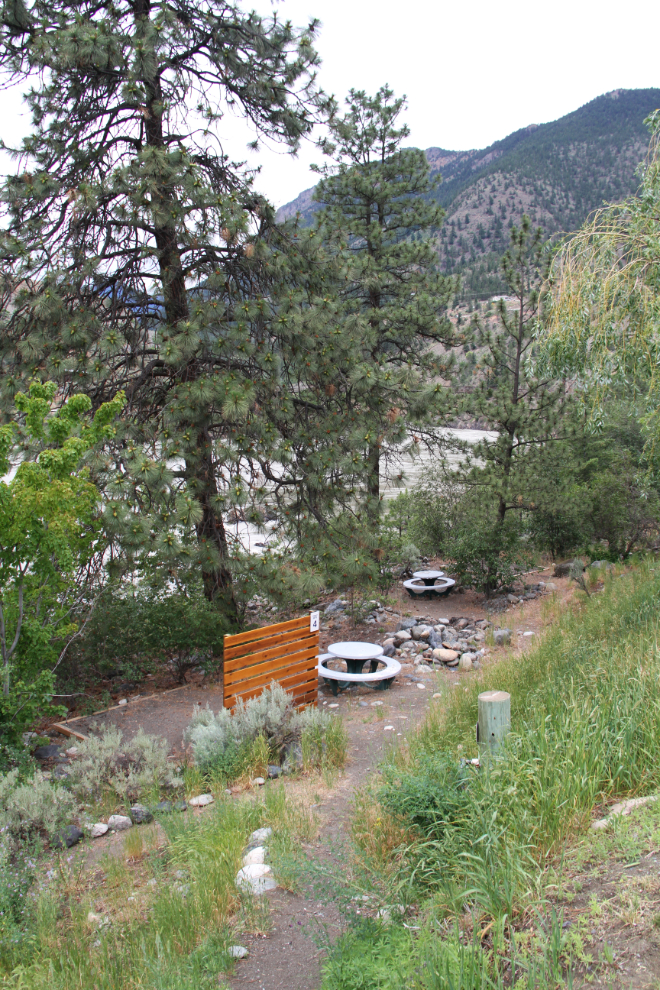
The office, in a truck camper on the main RV level, is only open from 4:00 until 7:00, but I just checked in with Peter up on the driveway.

Where to start my exploring of Lillooet? Well, with an historic bridge right in front of me, that choice was easy. HistoricBridges.org says of it: “…this beautiful suspension bridge is a good representative example of a smaller-scale suspension bridge from the early 20th Century. The two tower suspension bridge features a main central span that is supported by the main cable by suspenders and has a wooden pony truss for stiffening. The arm spans between the towers and the anchorages are not supported by any suspenders from the main cable and are instead supported by other means. The towers of the bridge are composed of traditional built-up riveted beams that include attractive v-lacing.”
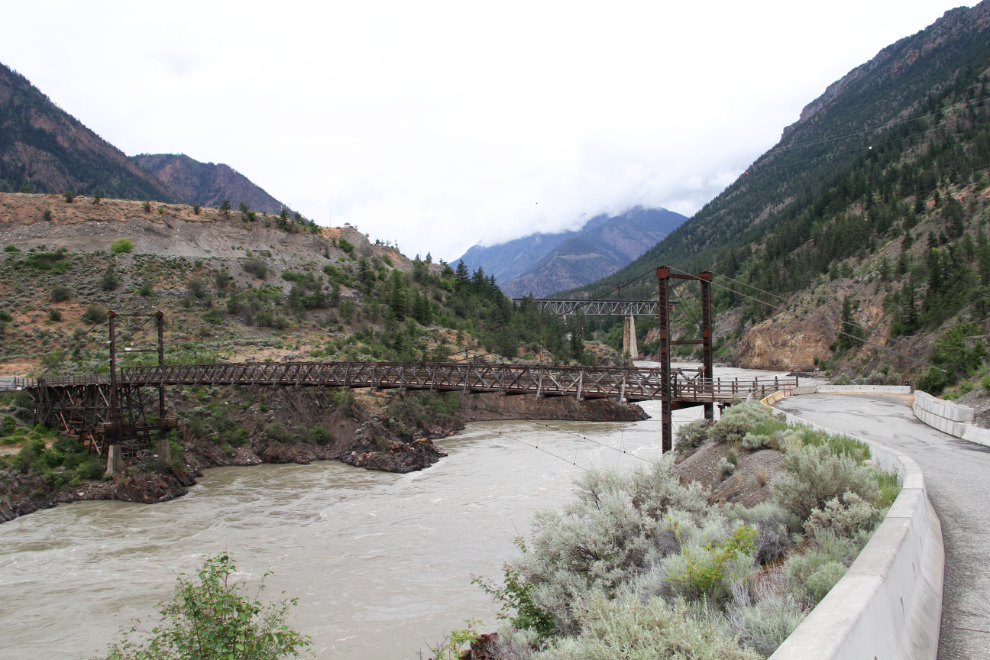
The bridge was built in 1913 to replace a ferry that had been winched back and forth across the river since 1860. This bridge was replaced by a new concrete bridge, and was restored for non-vehicular traffic in 2003.
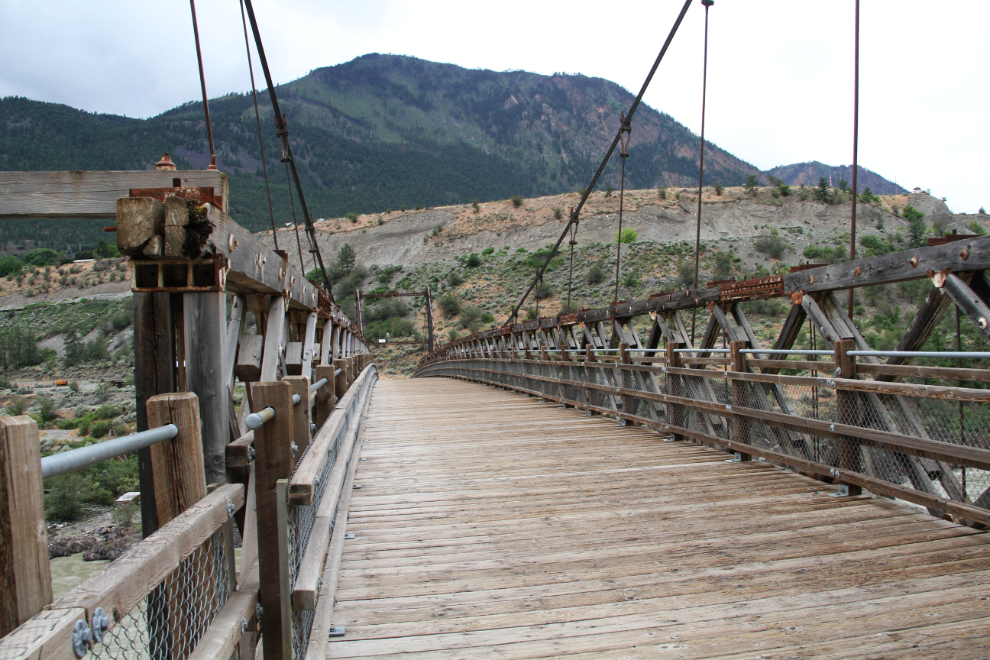
On the west side of the river, the bridge is stabilized by cables held by wooden towers. On the east side, the cables are held by concrete and rock dead-men anchored into the hillside.
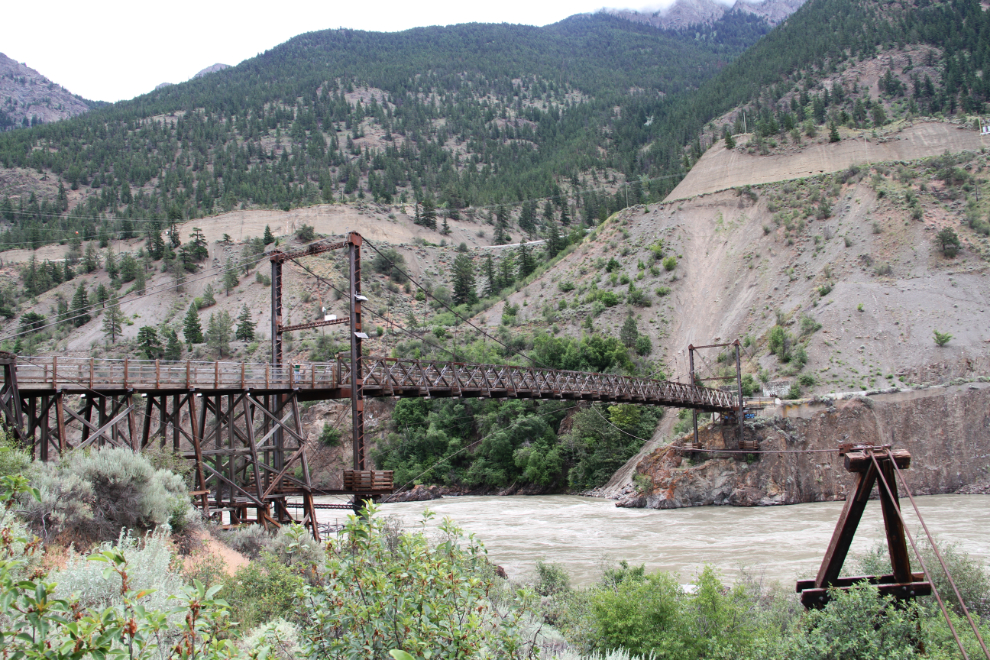
On top of the eastern bridge tower is an active osprey nest, with a webcam, installed by the Lillooet Naturalist Society, broadcasting live video.
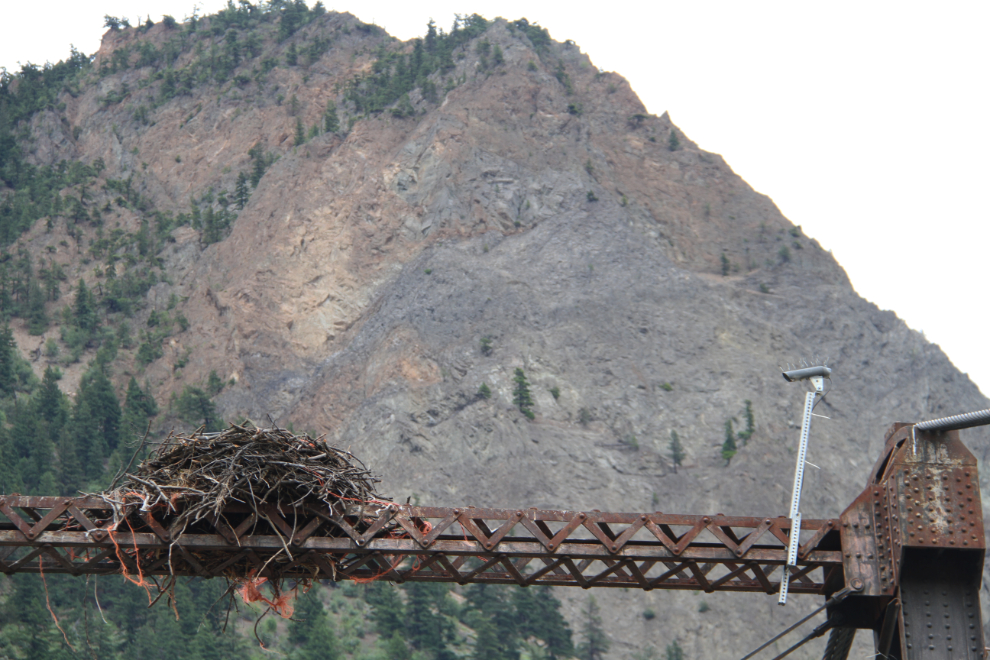
Below the bridge are fishing camps, similar to ones that have been there for hundreds, perhaps thousands of years. The Old Bridge soon came to represent everything I enjoyed about Lillooet, and the dogs and I spent a lot of time walking to and from it. Recent and ancient history, nature in the form of osprey, marmots and sturgeon, and overwhelming everything else, the power of the Fraser River.
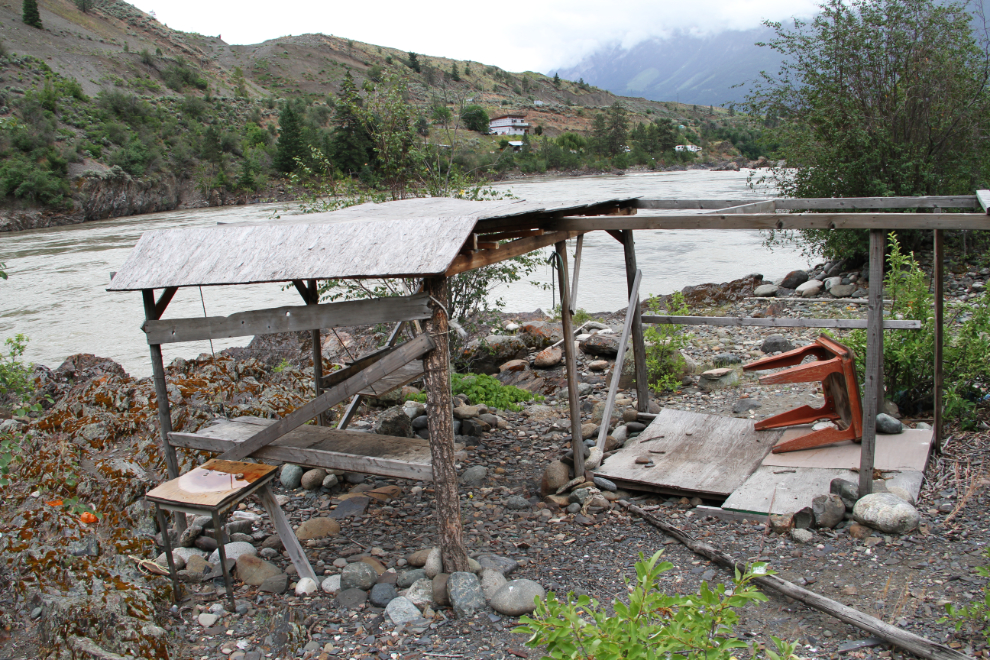
Tucker unfortunately discovered cactus at the Old Bridge. Wrapping my shirt around my hand lessened the pain of getting it off his paw, but those spines are at least as sharp as a needle, and go through anything.
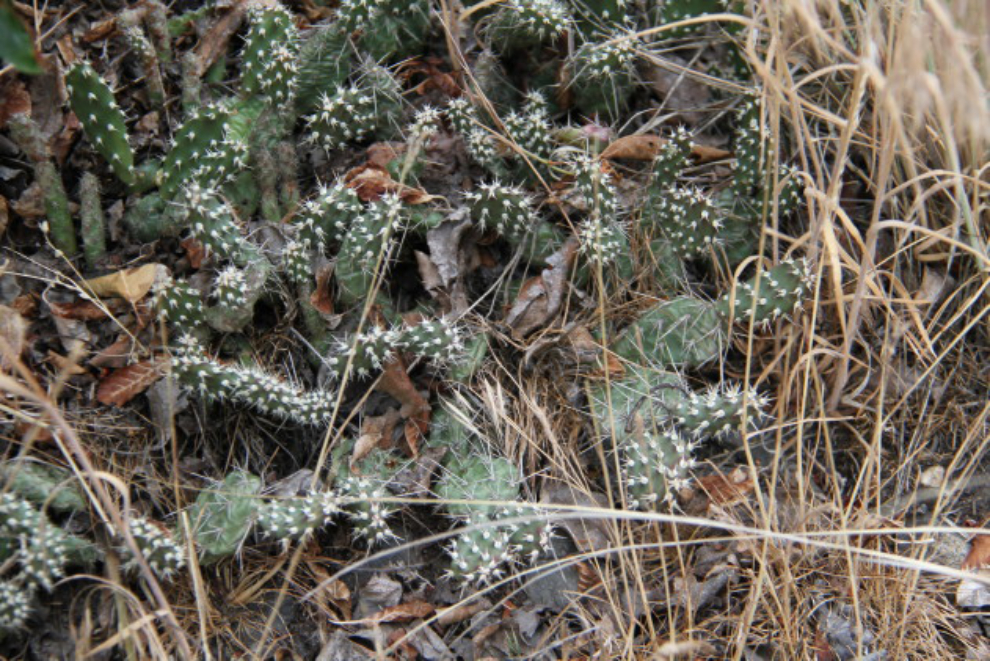
Looking downriver from the bridge towards Lillooet and the valley I drove through to get here.
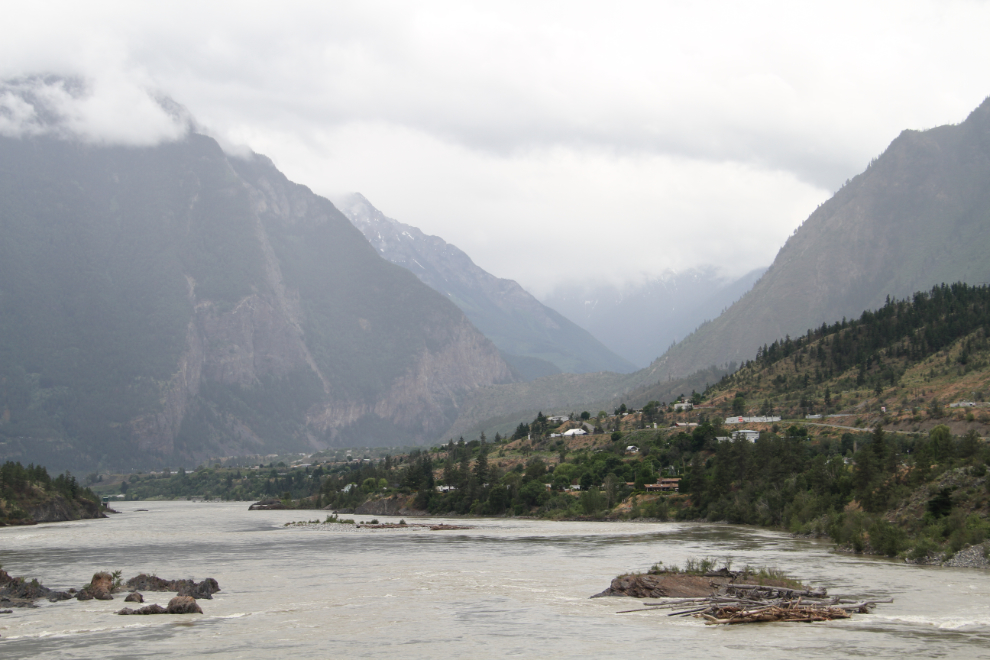
It was now after 5:00 pm so I drove into Lillooet to have a brief look around before dinner. There are 3 “Welcome” signs as you come into Lillooet from the north or west – this very creative one is the closest to downtown, at a large pullout with information panels.
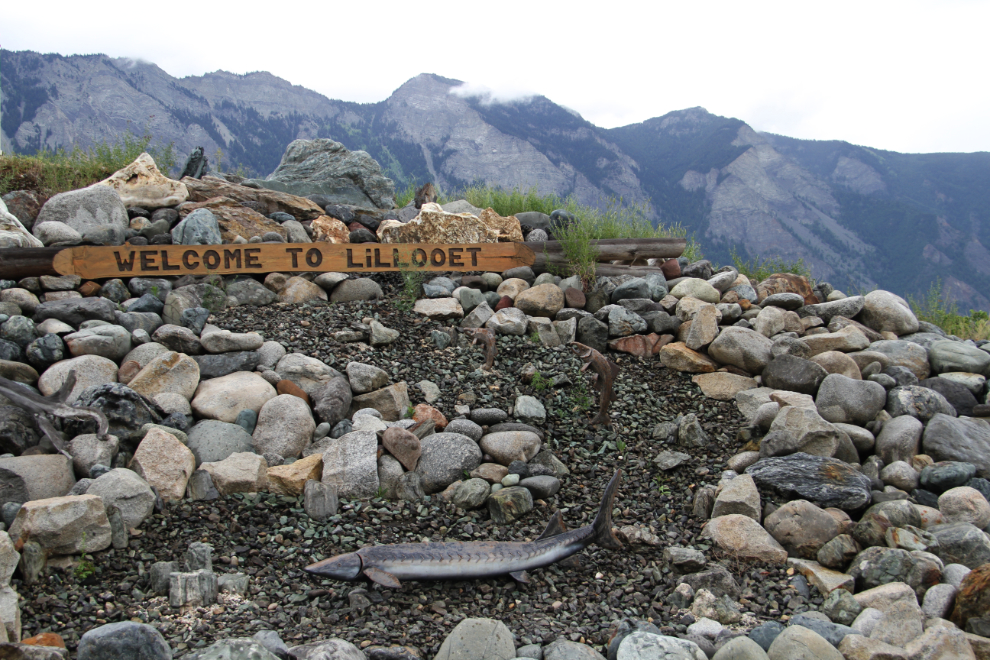
The Lillooet Cemetery has ben the site of burials since 1887, but it was formalized with the Province as a cemetery in March 1938. At that time, 179 burials had been recorded.

Unfortunately, few of the graves have markers. A lot plan posted at the entrance shows about 800 grave sites in total now.
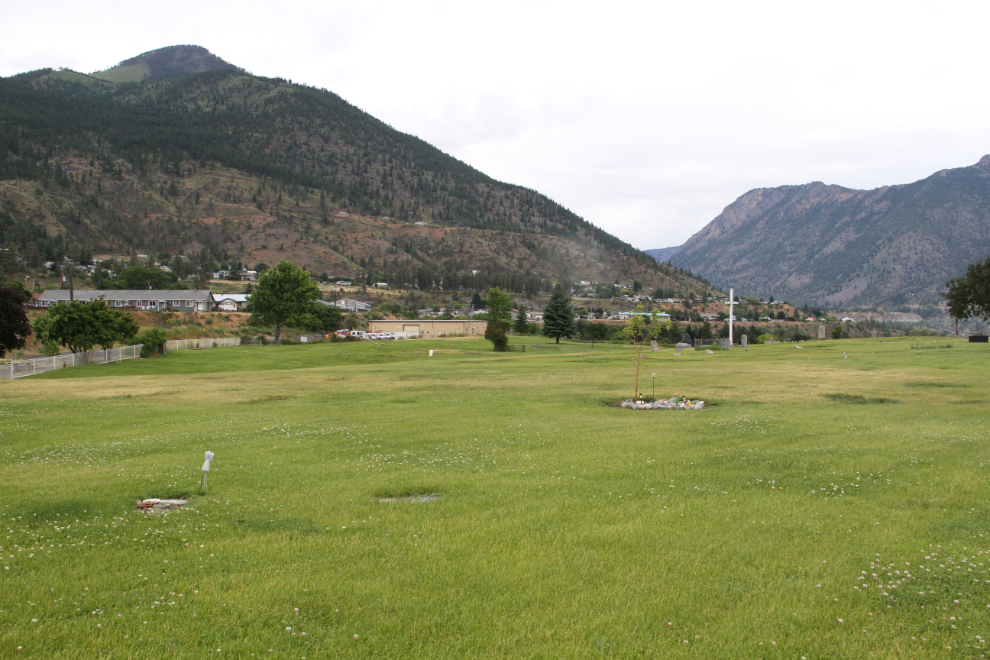
A look at The Bridge of the 23 Camels from the highest point in the cemtery. The bridge opened in 1980 to replace what is now called The Old Bridge. It was named to commemorate BC’s first and last experiment with using camels as draft animals. In 1862, John C. Callbreath imported 23 Bactrian camels to haul freight from Lillooet to the Cariboo gold fields. The camels, though, scared horses and many people, and their hooves could not handle rocky trails. They were soon abandoned.
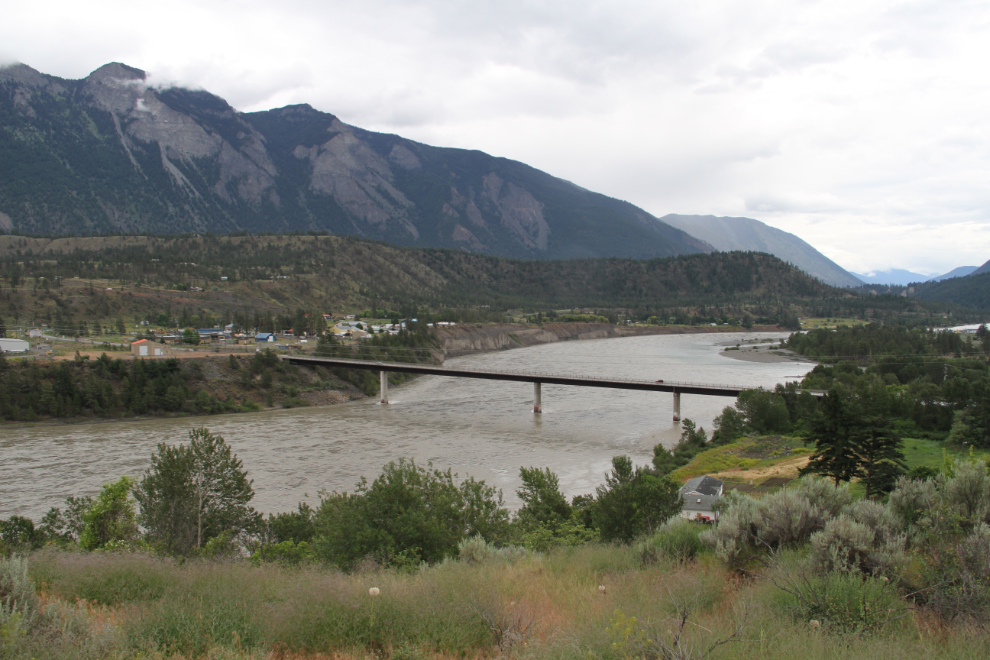
A closer look at The Bridge of the 23 Camels the next day.
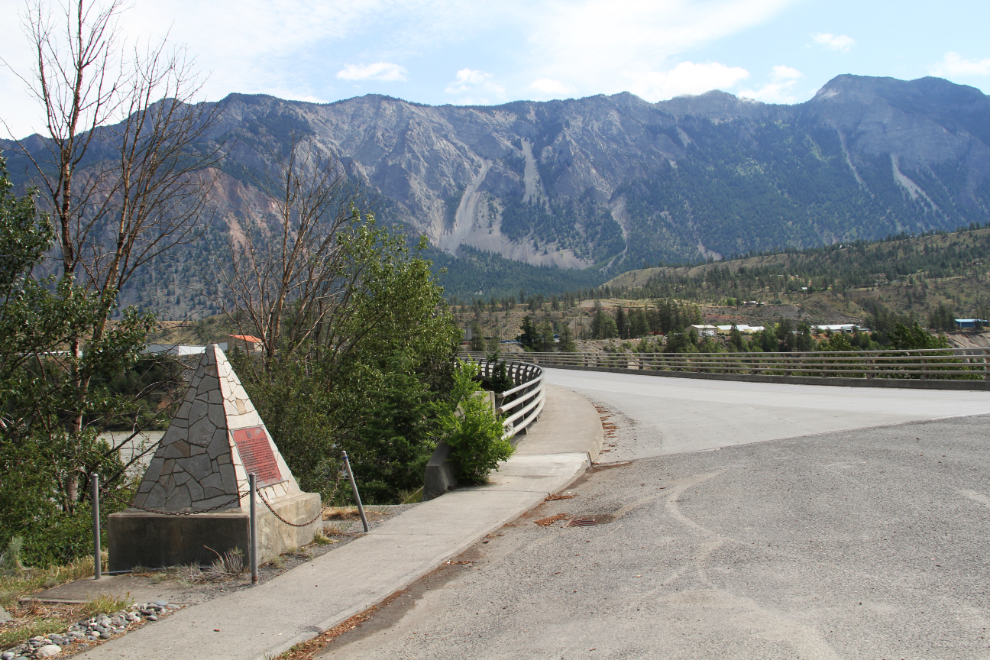
There are several walking trails around Lillooet, including this one at the north end of town, offering a panoramic view over the valley.
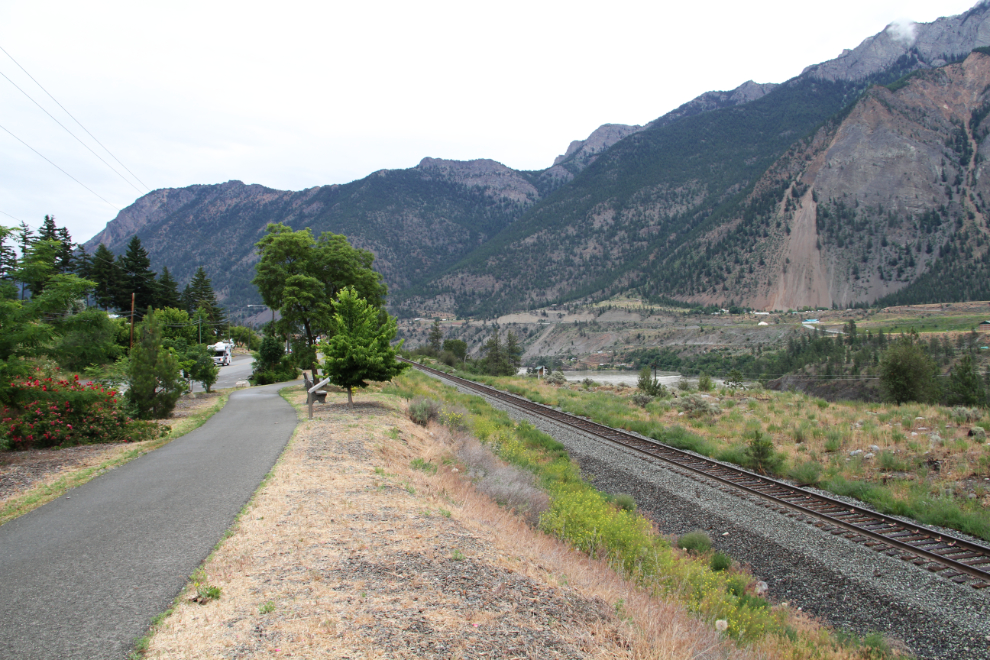
This road dead-ends at the east side of The Old Bridge.
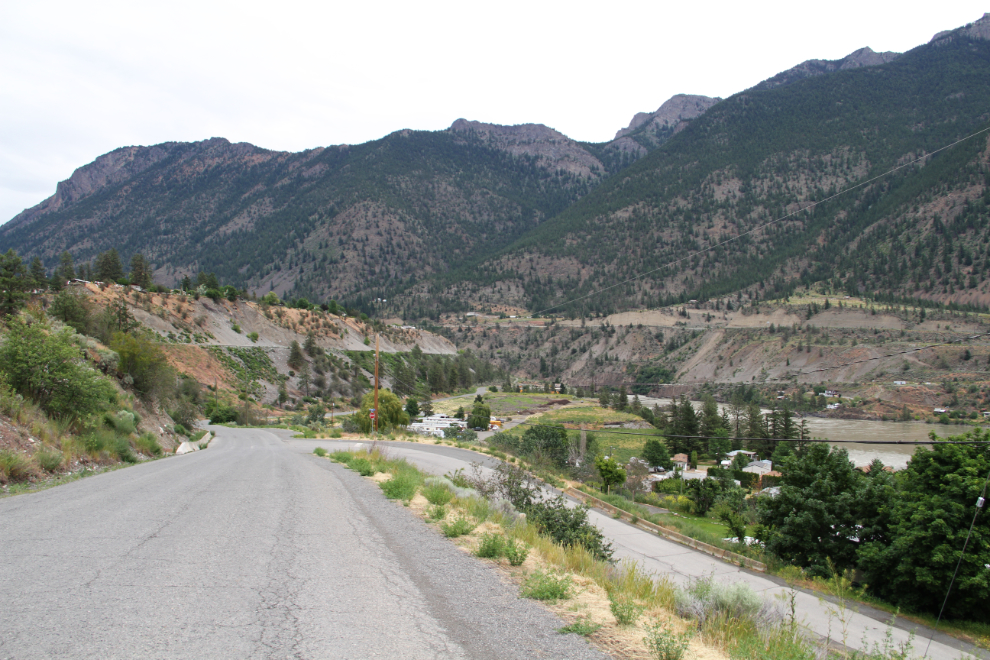
Back into town looking for old or interesting architecture. This is the Municipal Hall.
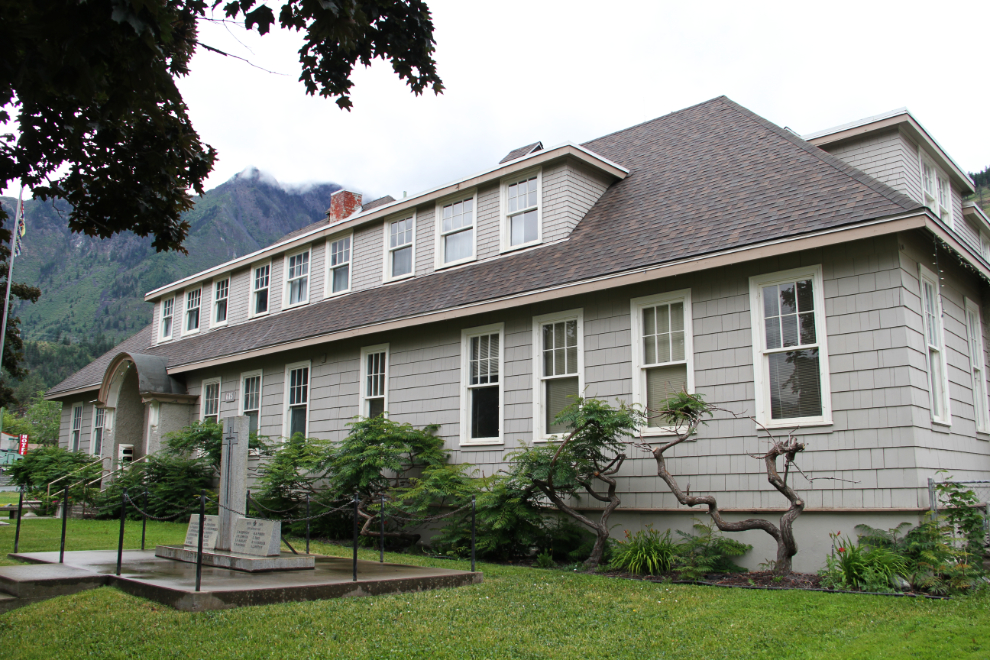
There are jade sculptures of various sorts around Lillooet. This one, in front of the Municipal Hall, was combined with a piece of Cayoosh Creek chert by Kirk Makepeace.
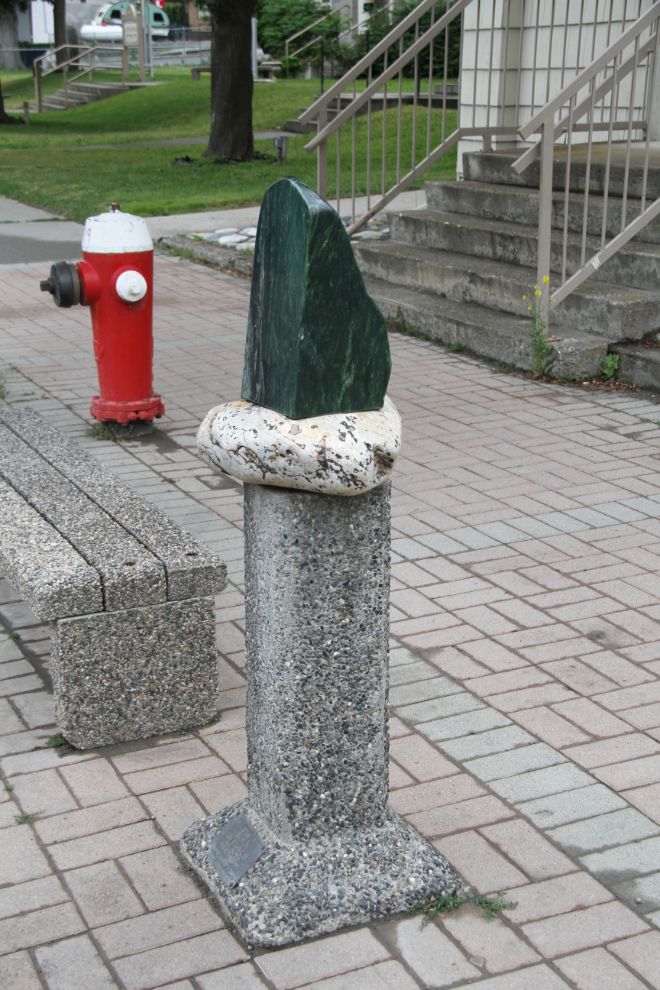
The best-known of the old buildings in Lillooet is the Miyazaki Heritage House. It was built as the Longford House in the late 1880s for prominent Lillooet citizens Caspar and Cerise Phair. Master builder William Duguid executed the Second Empire Mansard style residence. In 1933 the Phair’s son became the owner of the home, and during World War II, he met Masajiro Miyazaki, a Japanese-Canadian physician who was interned at Bridge River with his family. Phair got approval for Dr. Miyazaki to open a medical clinic in his basement, and in 1947, the doctor became owner of the house. In 1950, Dr. Miyazaki became the first Japanese-Canadian to hold public office when he was elected to the Town Council, and in 1977, he was invested into the Order of Canada.
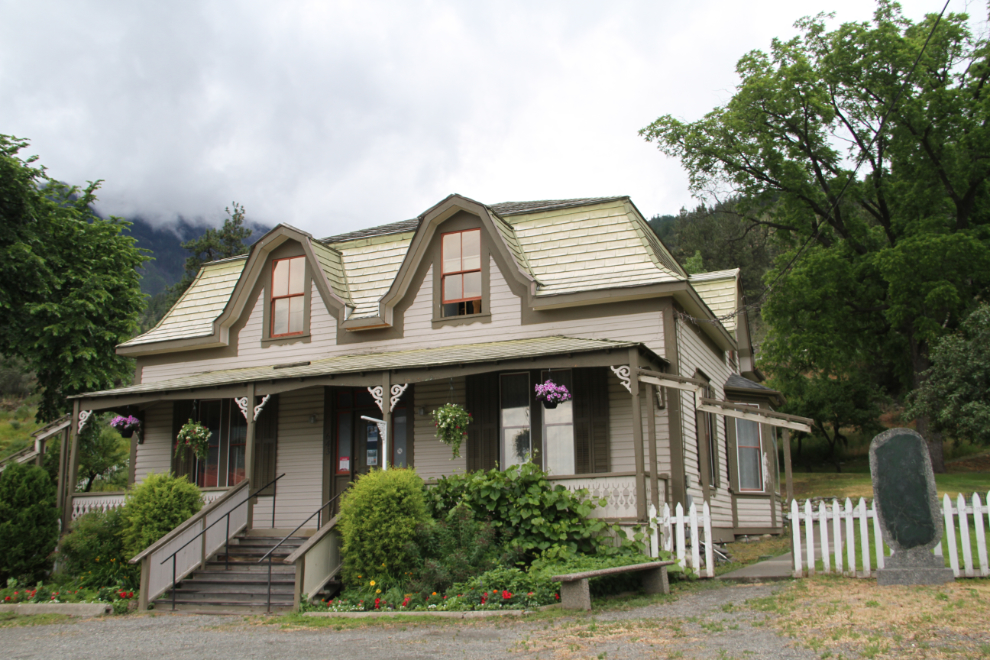
This sculpture at the east end of The Bridge of the 23 Camels was created from a Pelton wheel from a hydro-electric plant. Interpretive panels describe the Bridge River Hydro System of 3 dams and reservoirs, and 4 generating stations.
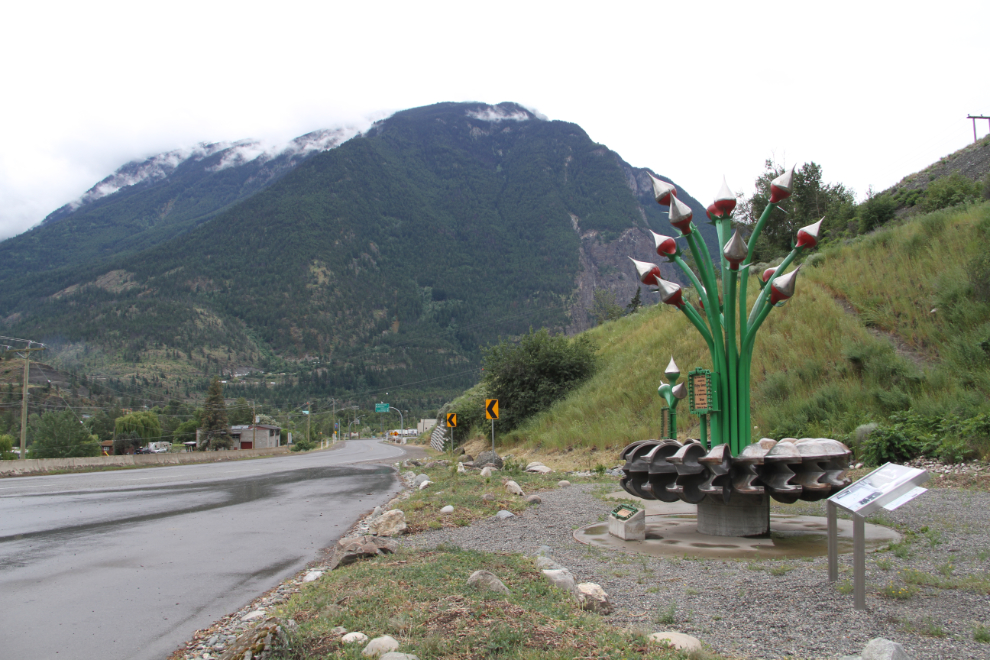
After getting the kids fed a very late dinner, it was time for a proper barbecue to celebrate my deep pleasure at being in that place doing what I love to do.
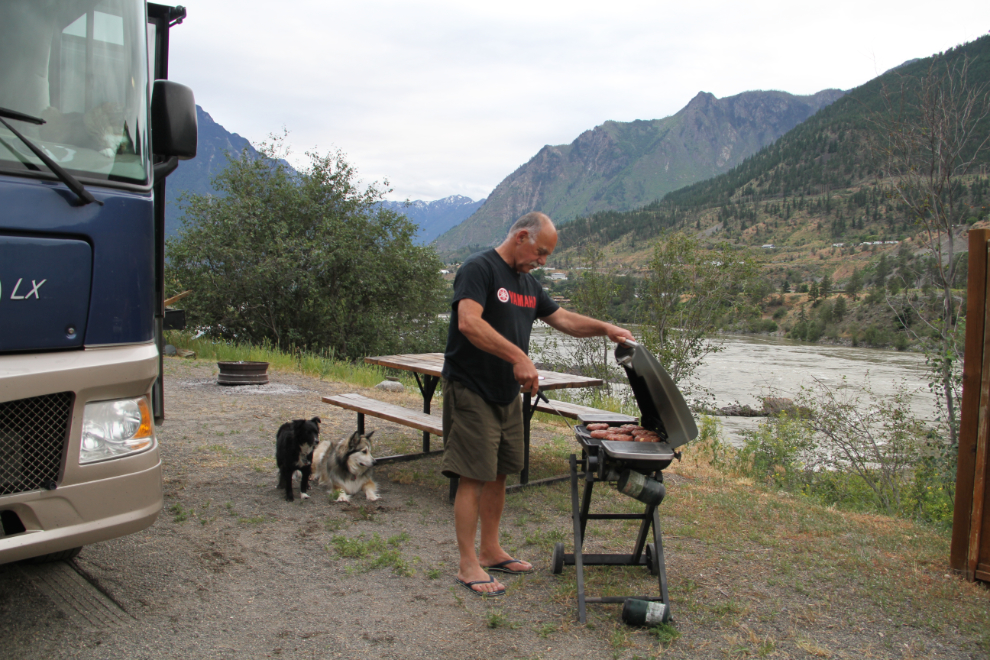
The weather was much better the next morning, and 5 men in 2 boats were on the Fraser River right below me, trying to catch a white sturgeon (Acipenser transmontanus). Peter had told me that there were some 6-7 foot ones being hooked recently. This is a catch-and-release fishery, but these massive fish will jump right of the water when hooked, and that fight draws anglers from all over the world.
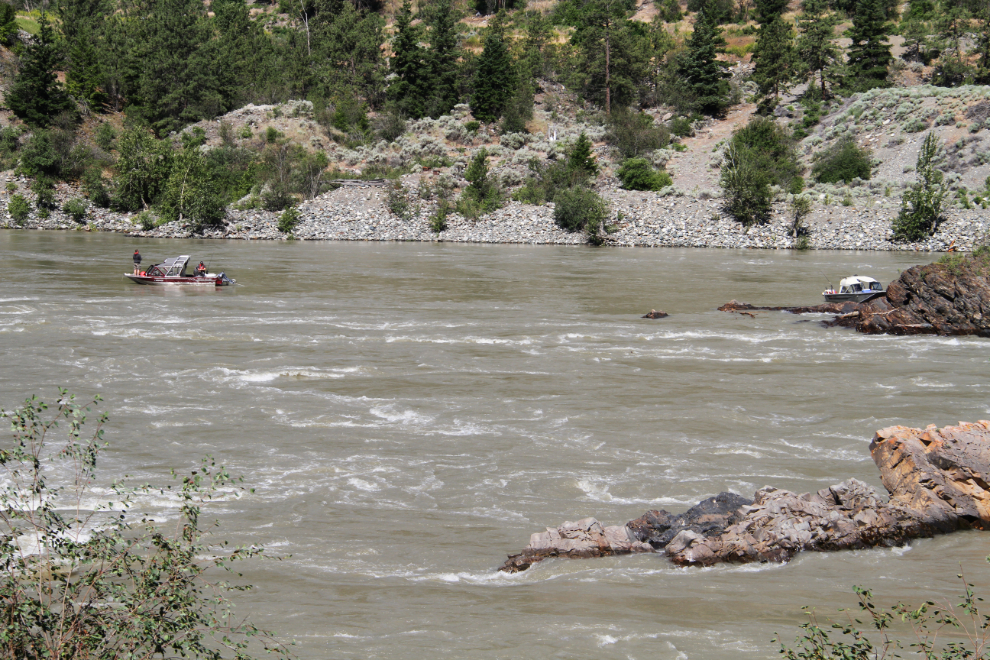
I love the roadside signs of the biggest white sturgeon fishing charter operation. The largest freshwater fish in North America is a River Monster indeed!

The Fraser Cove RV Park was so perfect for the dogs and I that I wish we could have stayed for 2 weeks. This bench is 10 feet from a couple of outhouses – a beautiful place to wait for your partner to do what needs to be done, perhaps 🙂
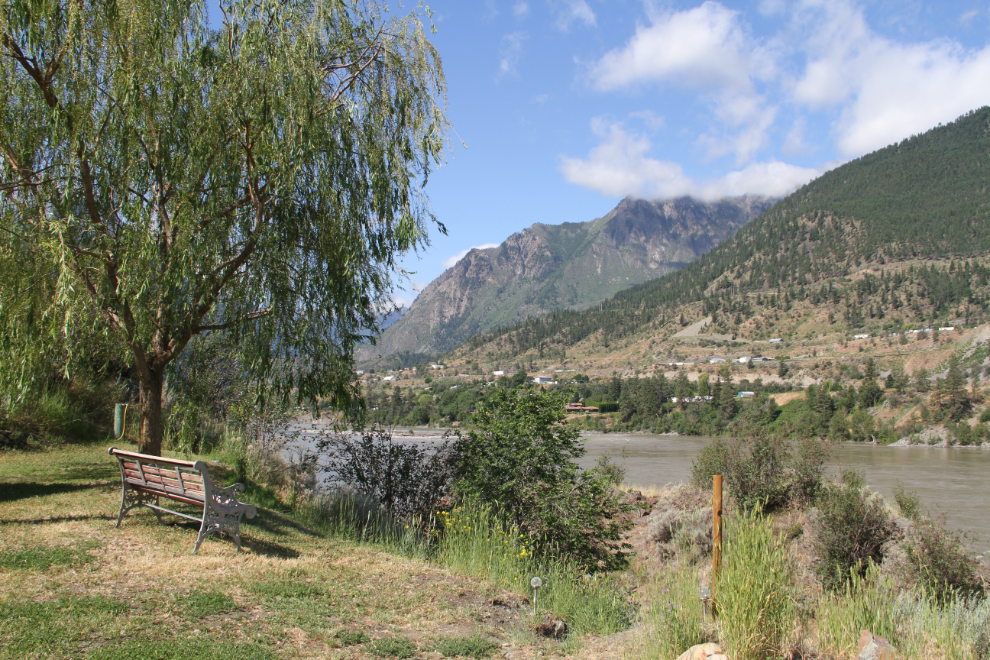
Here’s a good look at my camp site. Peter had warned me that the wifi probably wouldn’t work up here, and he was correct. But I discovered that if I took my laptop down to the lower level and logged onto the network there, it would hold it back at the rig.
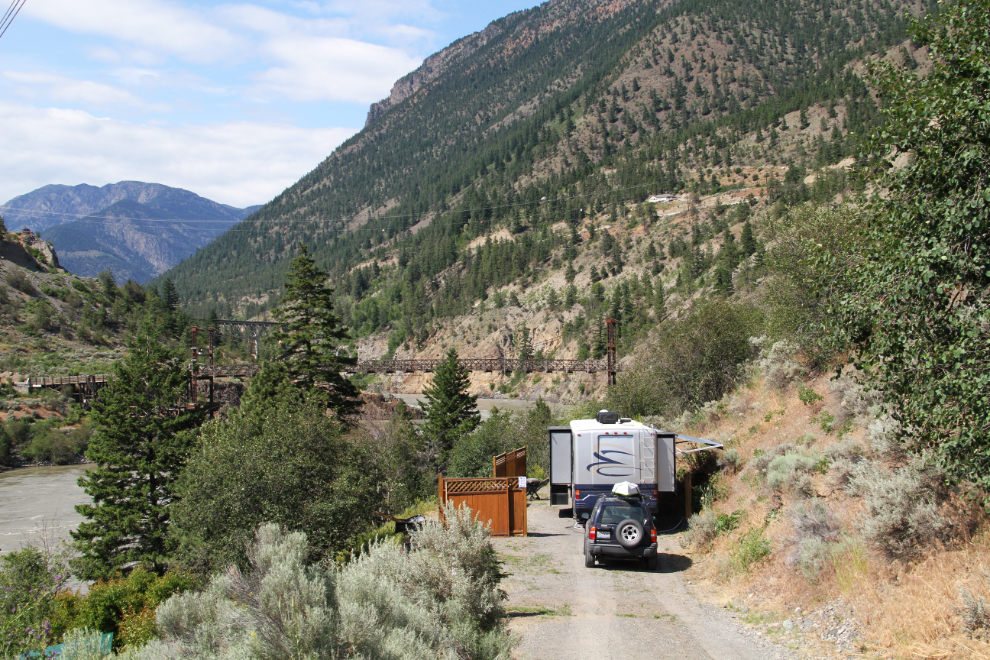
The Old Bridge was a wonderful dog-walk destination. They could be off-leash much of the time. A disappointing thing I discovered there and in Lillooet generally is that picking up your dog’s poop is not a widely accepted thing to do. Even downtown around the interpretive panel at the Miyazaki Heritage House where somebody is bound to step in it… 🙁
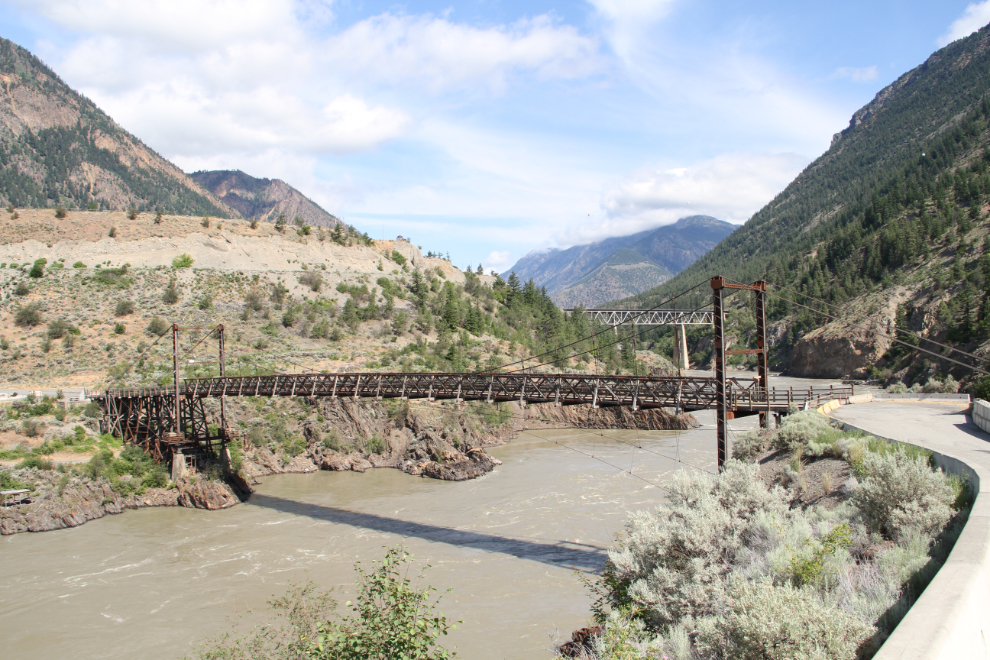
For a longer walk, Davis Road up to the highway was excellent, as it gets pretty much no traffic except for a few RVs in the afternoon. This is looking back down towards the RV park.
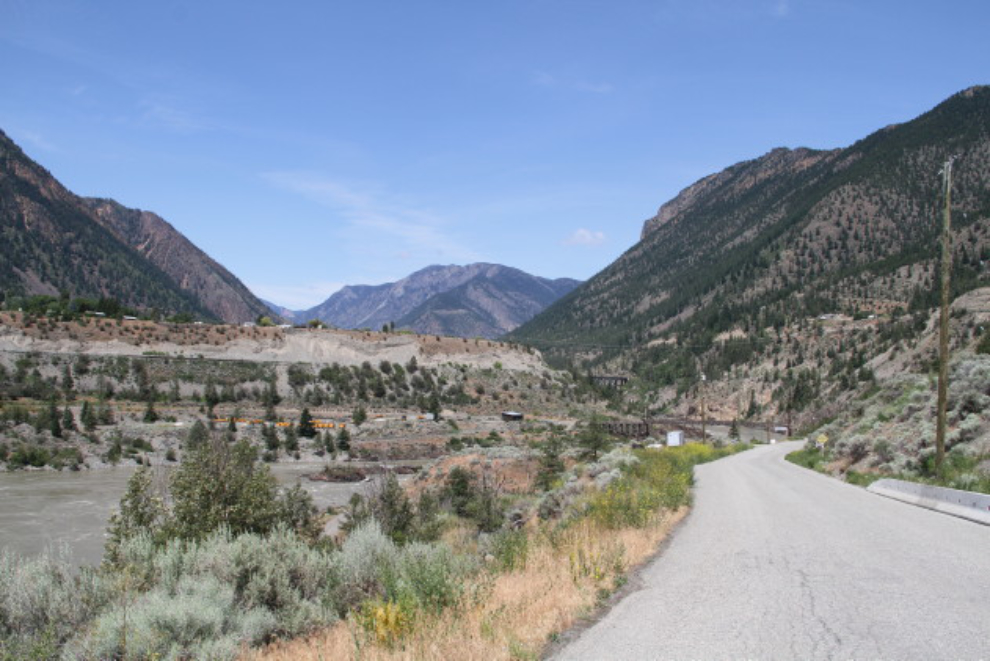
I felt like splurging on a really special lunch, and the Fort Berens Estate Winery a couple of kilometers away was recommended and looked perfect. I did a tasting first, and the Dry Riesling 2016, which has won Gold at both the Pacific Rim Wine Competition and Los Angeles International Wine Awards already this year, was my favourite.
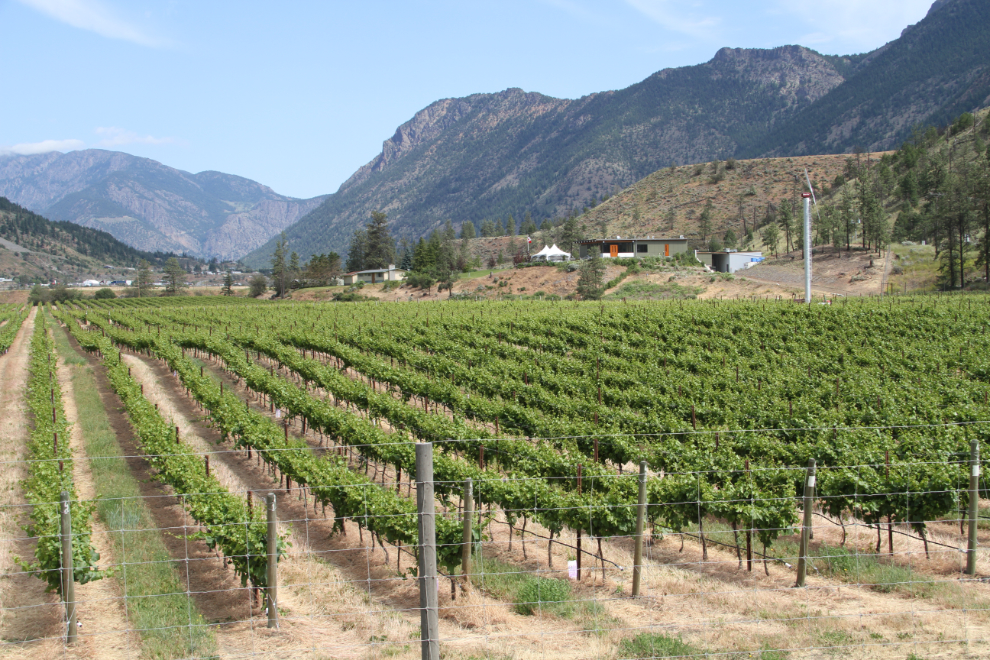
For lunch, Haida Wild Halibut Linguine, with icicle tomato sauce, spinach, basil, sourdough bread, and paired by the chef with a bottle of their Chardonnay, was simply superb. I got chatting with a couple of staff members and a client who lives nearby. The pride that the staff takes in what Fort Berens is accomplishing, and the love that all 3 people have for this community, was a real pleasure to hear. The client told me that e’s got his sturgeon for the year, and described some of the fishing technique, including putting a lot of weight on – “a railroad spike works well” 🙂

What a wonderful way to spend 90 minutes or so on a day like this.
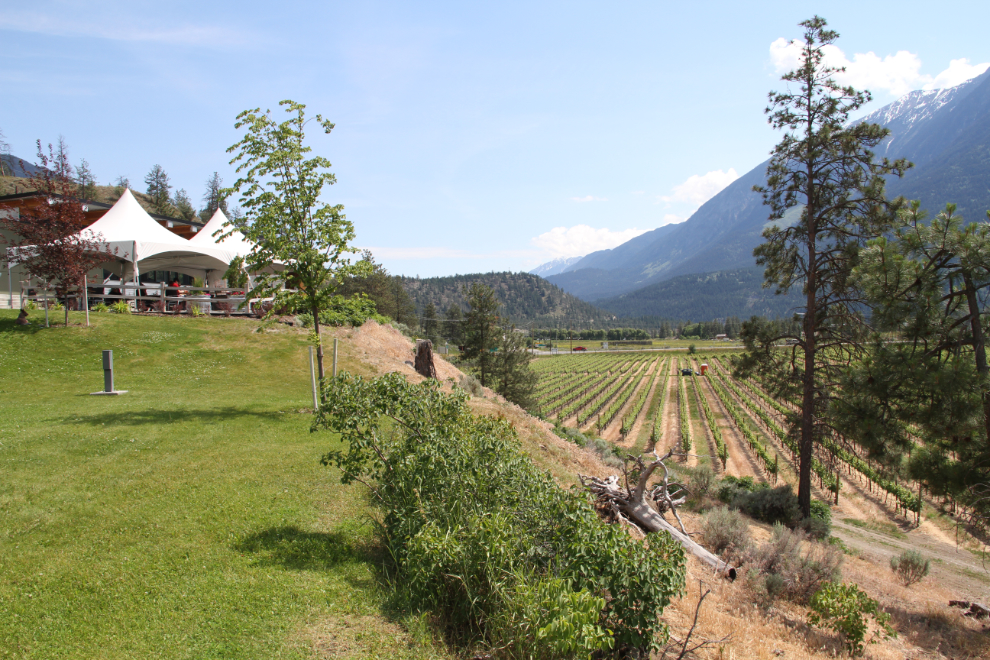
Back at the RV park, where Bella and Tucker had had their afternoon nap, it was time for some play. We found a lovely little beach on the river right below the campsites.
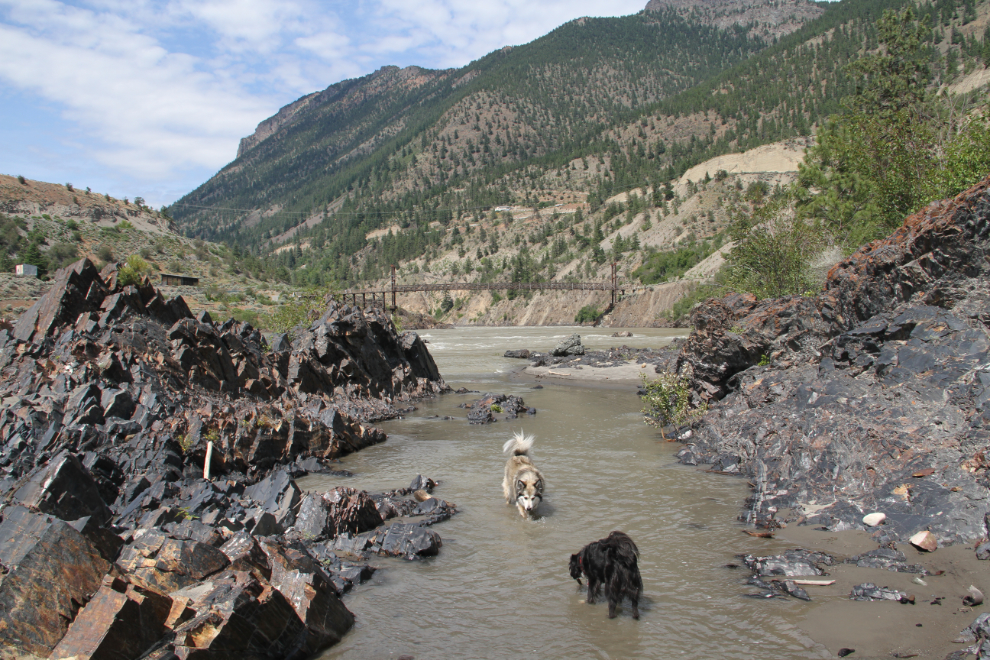
Soft sand, warm sun, moving water, and sticks to play with. It takes two to fetch a stick well!
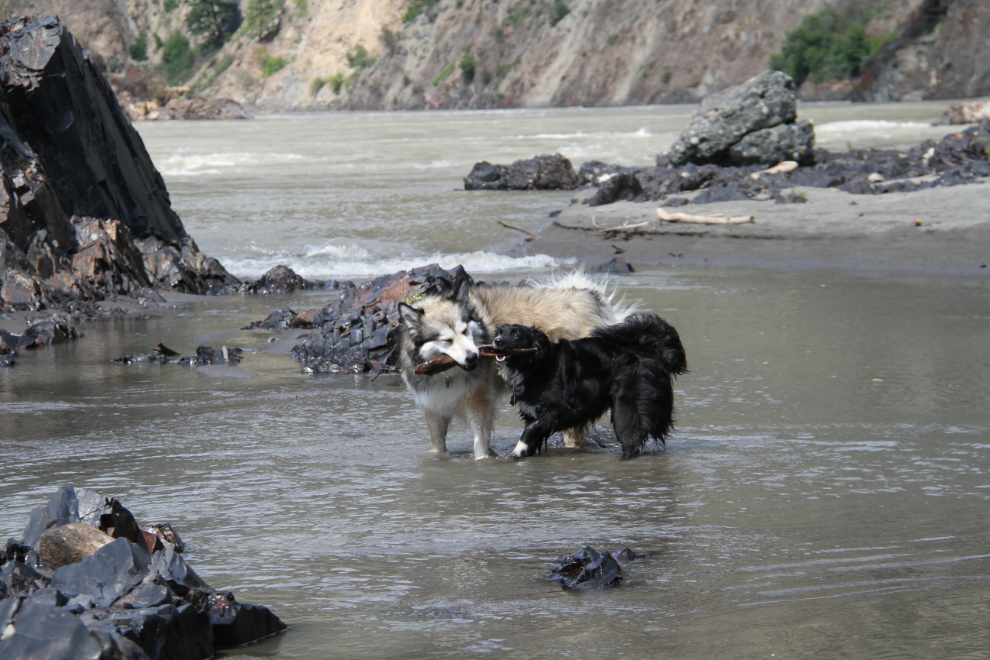
There were even some really intersting rocks around the beach, so we were there for a long time, playing and then just relaxing in the sun with nobody around. I was born in a hospital that overlooked the Fraser River, spent countless days playing along it and panning gold on it with my Dad, and I still feel a strong connection to it.

The next day, Day 48, June 12th, was taken up with a drive to Goldbridge and Bralorne, but that was quite an adventure that deserves its own post (with 58 photos!).
Trains are seldom seen on the rail line that runs through Lillooet.
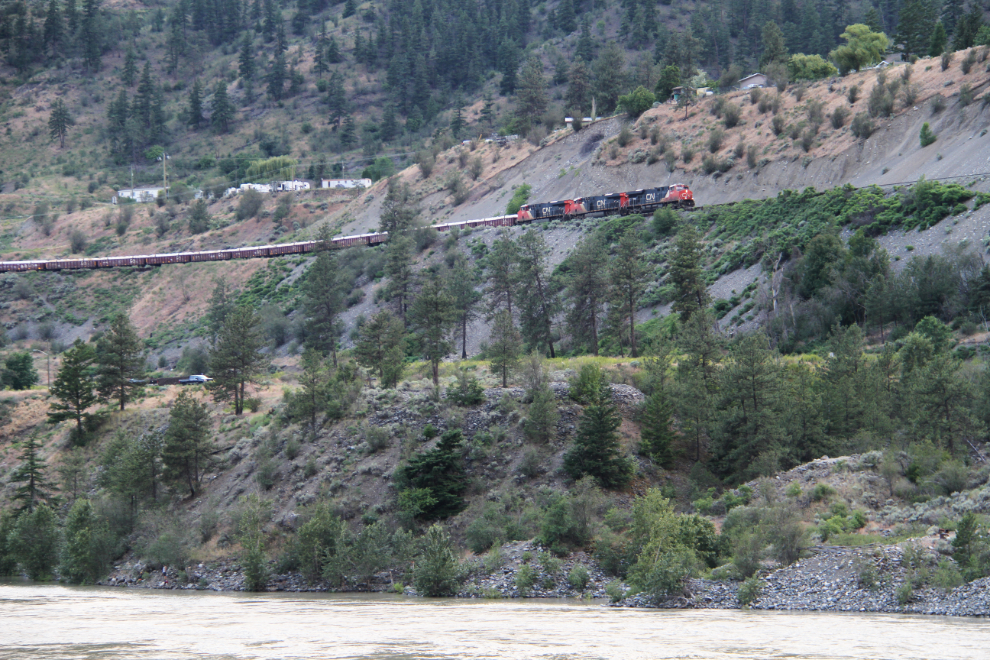
Dramatic lighting, seen from The Old Bridge at 8:15 pm.
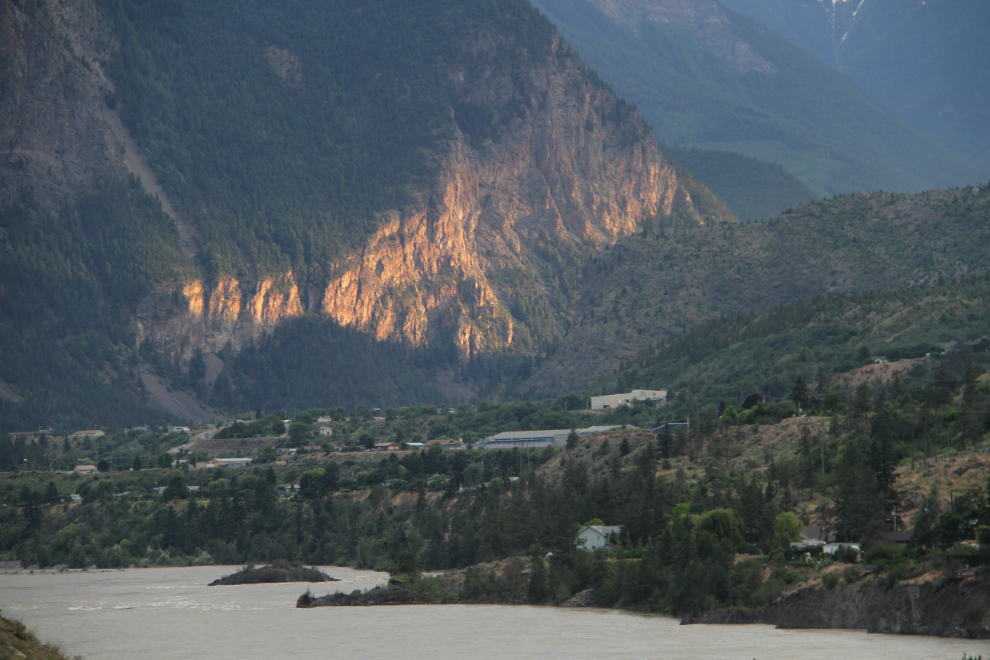
I hadn’t had any luck photographing the ospreys at the bridge, but finally, at 8:25 pm with a howling wind making holding the camera steady almost impossible, I got a few shots.

On our final walk to The Old Bridge as we were getting ready to leave Lillooet, one of the ospreys gave me a parting gift.
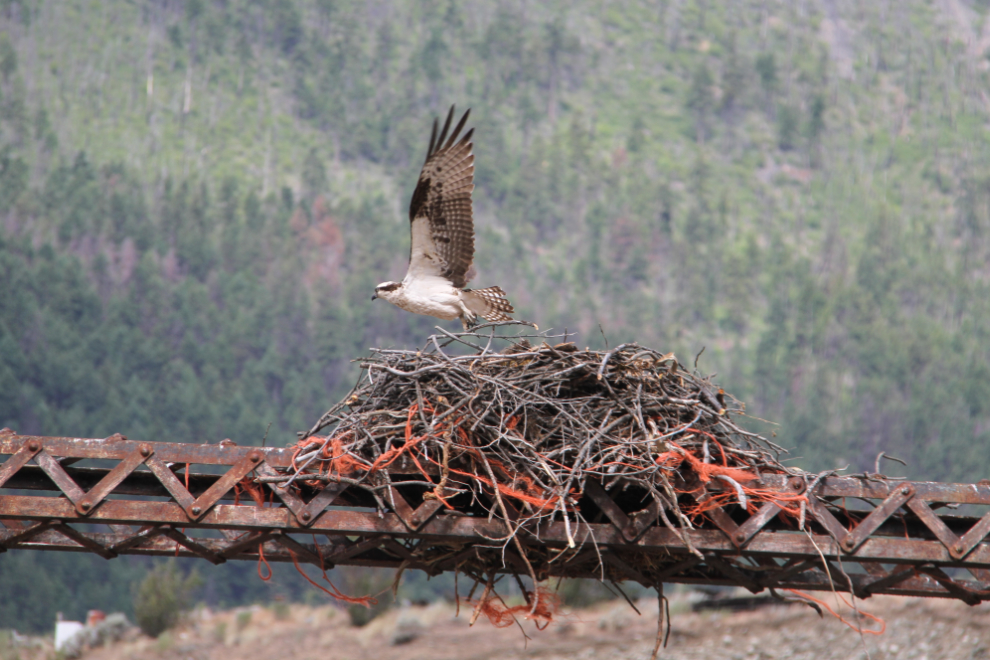
At about 10:30 on Day 49, we were on our way to visit old friends near 100 Mile House.